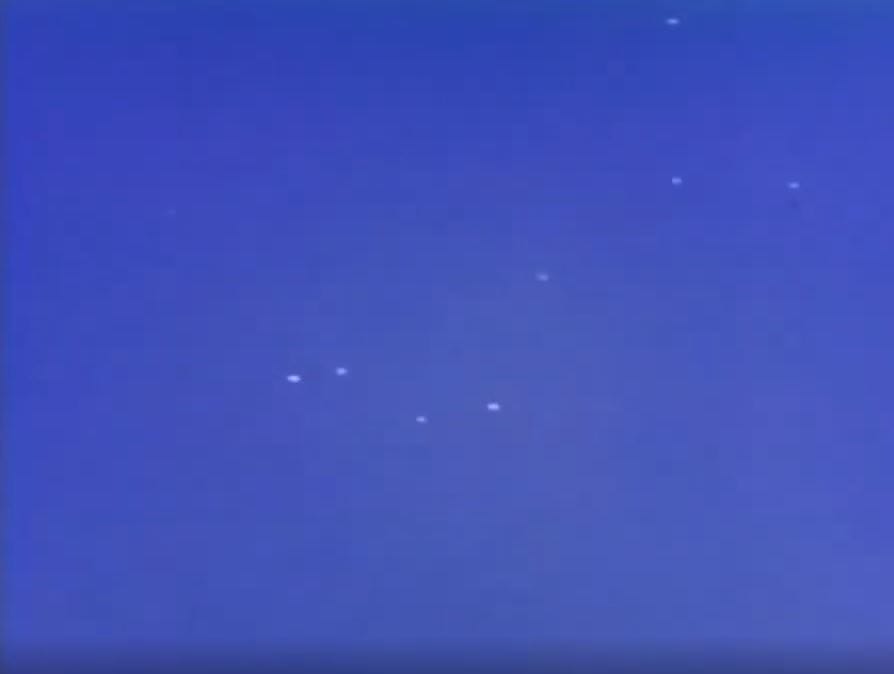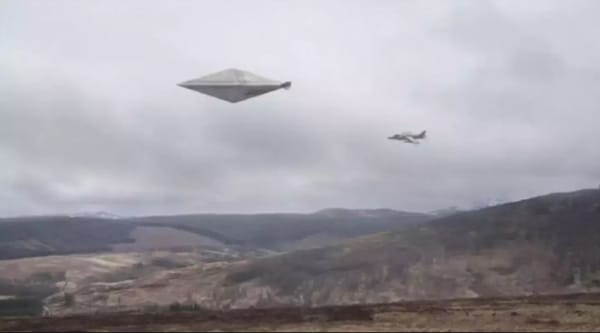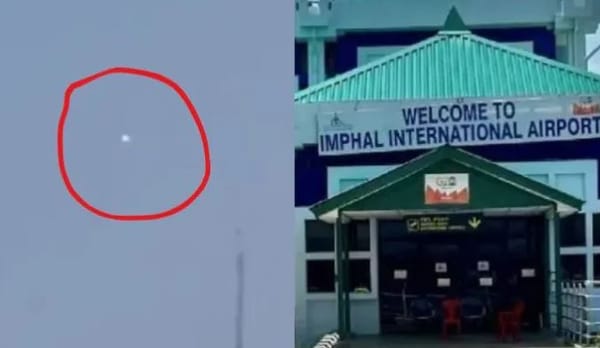The 1952 Tremonton Film

Introduction
In the summer of 1952, a seemingly ordinary day in Tremonton, Utah, became a pivotal moment in the history of unidentified flying objects (UFOs). A film captured by a Navy officer documented a perplexing aerial phenomenon that would spark intrigue and speculation for decades to come. The Tremonton film not only provided one of the earliest pieces of visual evidence in the modern UFO narrative but also reflected the heightened public interest in extraterrestrial life during the post-World War II era. As the Cold War intensified and the space race loomed on the horizon, sightings of mysterious flying objects captured the imagination of the American public and led to official investigations. This article explores the circumstances surrounding the Tremonton film, its impact on UFO research, and its enduring legacy in popular culture.
Background
The early 1950s were marked by a growing fascination with the possibility of extraterrestrial life and unidentified flying objects (UFOs). Following the end of World War II, the world entered a new era characterized by technological advancements and heightened tensions of the Cold War. The American public, fresh from the excitement of space exploration and military innovation, was captivated by reports of mysterious aerial phenomena. The term "flying saucer" had entered popular vernacular after a series of widely publicized sightings, most notably Kenneth Arnold's 1947 sighting near Mount Rainier, which fueled speculation about what might be traversing the skies.
Amid this climate of curiosity and anxiety, the Tremonton film emerged as a significant event. On July 2, 1952, a Navy officer stationed in the area was on a family outing when he spotted several unusual objects in the sky. He quickly captured the phenomenon on film, which would later be analyzed by both skeptics and believers alike. The footage not only documented the sighting but also became a cornerstone of the UFO debate, prompting investigations by military officials and contributing to the burgeoning UFO discourse in America.
The significance of the Tremonton film extends beyond its immediate spectacle; it reflects a period when the intersection of technology, paranoia, and the quest for knowledge about the universe began to take root in American culture. As the film gained attention, it became a crucial piece in the puzzle of understanding what lay beyond the earthly realm, setting the stage for ongoing discussions about unidentified aerial phenomena.
Description of the Film
The Tremonton film, shot on July 2, 1952, captures a compelling scene of unidentified aerial objects gliding across the Utah sky. The footage, approximately eight minutes long, was filmed by Navy officer Delbert C. Newhouse while he was on a family outing. Using a 16mm camera, Newhouse recorded a series of bright, circular objects that exhibited unusual flight patterns.
In the film, the objects appear to be disc-shaped and shine brightly against the backdrop of the blue sky. As they move, they demonstrate erratic movements, including rapid changes in direction and speed, which defy conventional explanations for aircraft of that time. The footage begins with Newhouse framing the objects in the distance, gradually zooming in to capture their details as they hover and dart about.
Throughout the film, viewers can see the objects reflecting sunlight, giving them a metallic appearance. The clarity of the footage allows for close examination, and the absence of visible wings or propulsion systems adds to the mystery surrounding their origin. As the objects move in unison and occasionally separate, they create a sense of coordination that further fuels speculation about their nature.
Upon reviewing the film, various experts and organizations, including Project Blue Book, conducted analyses to determine the identity of the objects. Despite extensive examination, no definitive explanations emerged, leaving the film as one of the most intriguing pieces of evidence in the UFO phenomenon.
The Tremonton film stands out not only for its visual documentation of an unexplained event but also for its contribution to the ongoing discourse about the existence of UFOs. Its combination of clear imagery, perplexing movement, and the credibility of the source has ensured its place in the annals of UFO history.
Analysis and Reactions
The release of the Tremonton film elicited a wide range of reactions from the public, media, and government officials. Almost immediately, the footage captured the attention of UFO enthusiasts and skeptics alike, each interpreting the sighting through their respective lenses. The initial response was one of intrigue and excitement, as many viewers believed the film offered concrete evidence of extraterrestrial visitation.
Scientific Investigations
In the aftermath of the film’s release, several organizations, including the U.S. Air Force’s Project Blue Book, launched investigations to analyze the footage and determine the identity of the objects. Experts in various fields, including photography, aerodynamics, and aviation, scrutinized the film for clues.
Some analysts pointed out that the objects’ movements seemed to defy the capabilities of known aircraft at the time, leading to speculation that they might be advanced technology or extraterrestrial in nature. The lack of wings or visible means of propulsion further fueled these theories. However, other experts suggested alternative explanations, such as reflections, weather balloons, or conventional aircraft flying at a distance.
Public Reaction
The film's impact on popular culture was immediate. Newspapers and television programs featured the footage, igniting public interest in UFOs. Many viewers were captivated by the idea that the objects could represent visitors from another world, and the film became a focal point in ongoing debates about extraterrestrial life.
However, skepticism also surfaced. Some critics argued that the film was inconclusive and lacked the scientific rigor necessary to support claims of UFO sightings. They suggested that the objects could have been misidentified natural phenomena, and without more concrete evidence, the film alone could not substantiate claims of extraterrestrial encounters.
Media Coverage
Media coverage of the Tremonton film ranged from sensationalist to skeptical. While some outlets hailed it as a groundbreaking discovery, others urged caution, emphasizing the need for further investigation before drawing definitive conclusions. The dichotomy in reporting contributed to a broader public discourse about the nature of UFOs, encouraging individuals to question their beliefs and consider multiple perspectives on the phenomenon.
Lasting Impact
The Tremonton film’s legacy endures, continuing to spark interest in UFO research and sightings. It remains a significant case study for those investigating unidentified aerial phenomena and is often cited in discussions about the credibility of UFO evidence. As both a cultural artifact and a subject of scientific inquiry, the film represents the ongoing struggle to understand the unknown and the human desire to explore the mysteries of the universe.
Conclusion
The 1952 Tremonton, Utah film stands as a significant chapter in the ongoing saga of UFO phenomena. Captured during a time of heightened public curiosity about extraterrestrial life, the footage offers a tantalizing glimpse into the mysteries of the skies. Despite decades of analysis and speculation, the objects depicted in the film remain unidentified, serving as a testament to the complexities surrounding UFO sightings and the interpretations they inspire.
The reactions to the Tremonton film reflect broader societal attitudes toward the unknown, ranging from wonder and intrigue to skepticism and disbelief. As investigations into the film’s authenticity continue, it has left an indelible mark on both popular culture and the scientific community, prompting discussions about what lies beyond our world.
In a time when the boundaries of technology and space exploration are continually being pushed, the fascination with unidentified aerial phenomena persists. The Tremonton film remains a cornerstone in this discourse, illustrating humanity's enduring quest for knowledge and understanding of the universe. As we continue to search for answers, the questions raised by this remarkable footage remind us that the mysteries of the skies are far from resolved, inviting future generations to explore and engage with the unknown.



